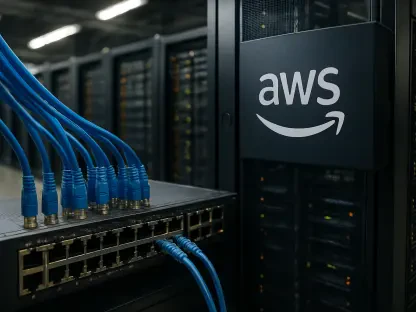Listen to the Article
As we move deeper into 2025, the frenzy about autonomous networks is building. The concept is not new, but the dedication and pace of communication service providers represent a threshold. Momentum toward autonomous IT systems has been building for decades, but now service providers are accelerating their plans for automation to keep up with mounting demands.
The reasoning is obvious: IT infrastructures are getting more complicated, traffic is growing, and companies require more agility to remain competitive. Old-fashioned manual management can’t keep pace—it’s slow, error-ridden, and a scalability inhibitor. Automation is filling the gap as a game-changer, simplifying operations, reducing downtime, and enhancing security.
So, why is network automation so important to IT productivity in 2025? This article takes a look at how this innovation is transforming enterprise connectivity and why organizations that fail to keep pace will be left behind their competition.
The Business Case
Reducing Operational Costs
Before exploring its advantages, it’s necessary to comprehend what renders a system autonomous. Automation eliminates or reduces the human element by enabling IT environments to configure, monitor, and maintain themselves. At its core, it consists of three key layers:
Programmable infrastructure: This encompasses physical as well as virtual connectivity devices and, more importantly, telemetry data that offers real-time visibility into their behavior.
Analytics and intelligence: Networks generate huge amounts of information, such as big data showing trends over time. Analyzing traffic patterns and identifying vulnerabilities allows for adaptation beforehand to offer the best performance.
Software control and automation: Autonomous programs manage essential systems—router provisioning and access control management—to remove the possibility of human error and ensure seamless operations.
One of the largest challenges for IT teams is the high cost of maintaining and troubleshooting networks. Manual troubleshooting and reactive configurations contribute to inefficiency, downtime, and increasing expenditures. According to Gartner, enterprises that implement autonomous systems can cut operational costs by up to 30% while significantly improving connectivity reliability.
By using such software, organizations can streamline configuration, monitoring, and troubleshooting—enabling faster issue resolution, less labor cost, and a stronger foundation.
Enhancing Security and Compliance
Cyber threats are evolving at a pace never seen before, and security policies can no longer be enforced manually. With automation, businesses can also identify vulnerabilities, configuration flaws, and policy gaps much faster. This allows them to implement security measures more consistently, and thereby reduce the risk of human negligence, resulting in a stronger and more resilient cyber defense posture.
Automated security monitoring tools, for example, can identify anomalies and trigger immediate responses without human intervention. The proactive approach of such measures not only eliminates risks but also ensures regulatory compliance in verticals like finance, healthcare, and government.
Scalability and Agility for Modern Businesses
As businesses expand and embrace cloud computing, IoT, and hybrid work environments, their infrastructure must scale accordingly. Manual connectivity management is an inhibitor of scalability and also introduces complexity to the process. Automation provides a dynamic alternative, allowing organizations to scale up or down effortlessly.
Take software-defined and intent-based networking, for example. Both of these systems leverage automation to adjust configurations in real time based on the business’s needs to provide optimum performance.
Major Technologies Driving This Change
As businesses expand and IT environments become more complex, automation is no longer a luxury—they become a necessity. The following are the key techs advancing the future of this field:
Ai and Machine Learning
AI-driven automation is changing the game of network management. Machine learning algorithms can observe and memorize traffic patterns, detect anomalies, and predict potential failures before they happen.
Software-defined and Intent-based Networking
Software-defined and intent-based architectures designed for flexibility and easier management enable networks to be managed dynamically rather than with static configurations. The former separates the control plane and data plane to allow centralized management, while the latter uses AI to make systems operate based on business intent.
These two technologies eliminate manual configurations, simplify performance, and enhance security and are therefore critical to the modern enterprise.
Zero-touch Provisioning
Zero-touch provisioning eliminates the need for manual configuration by enabling devices to configure themselves upon connection.
Real-life Use Cases
Enterprises Adopting Automation for Efficiency
Leading organizations are already embracing automation to stay competitive. For instance, Google and Amazon are already utilizing AI-driven automation to operate their massive cloud infrastructure effectively, with less downtime and the highest security. While one leverages this system to automate deployment and operations of Google Cloud infrastructure at scale, the other uses it to help seller and vendor business owners save time with manual, repetitive tasks to improve efficiency and accuracy.
Telecom and Service Providers Enhancing Performance
Major telecom providers, including AT&T and Verizon, are using automation to optimize 5G networks. Through machine learning, these systems examine and investigate patterns to make precise tweaks to parameters, improving coverage, speed, and reliability, thus improving the customer experience
Financial Institutions Strengthening Security and Compliance
Banks and financial institutions are adopting autonomous systems to enforce security policies, prevent data breaches, and adhere to stringent regulations, such as the general data protection regulation and the payment card industry data security standard.
What’s Next?
Moving further into 2025, autonomous IT environments will be even more sophisticated. AI, machine learning, and cloud-native technologies will come together to allow networks to become smarter, self-healing, and adaptive. Businesses that invest today will be in a better position to address the challenges of tomorrow.
Network automation is not science fiction anymore—it’s an operational issue. Organizations that take advantage will have lower expenses, enhanced security, and greater scalability. In contrast, companies that hold on to outdated, manual procedures risk losing revenue to inefficiencies and security vulnerabilities.
With the increasing sophistication of IT infrastructures, businesses must understand that automation is the key to gaining actual efficiency, agility, and resiliency in 2025 and beyond. The question now is not if businesses should automate but when.









